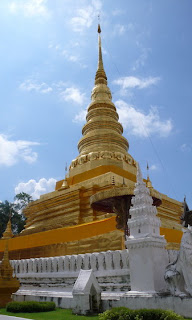Thailand – a voyage of discovery
It is not called the Caribbean of Asia for nothing. Yet, until recently, Thailand’s unparalleled marine playground has been quite difficult to access, enjoyed by but a handful of cruising yachts and an even smaller group of charter holidaymakers. But no more. A surge in the development of marina facilities and in the number of yachts available for charter mean that Thailand is set to burst upon the international scene as the world’s newest yachting playground.
Unimaginable coastline, islands & beaches
Over 1,000 miles of coastline bordering the Andaman Sea and the Gulf of Thailand, literally thousands of islands, countless beaches with pristine white sand, crystal waters and superb coral reefs, hidden creeks and headlands meeting the sea, mystical sea mountains. All these combine with a tropical climate to create the world’s most stunning cruising waters. Welcome to Thailand. The Thailand that independent cruising yachtsmen tell tales about on their travels. The Thailand that many have never left.
Safe tropical climate
Although in the tropics, Thailand has no typhoons. It is not in a hazardous weather zone. Even the seasonal monsoons are gentle. Temperatures range from 25o – 30o C for most of the year, and the sea rarely varies from a balmy 28o. This means comfortable, exotic cruising all year round.
Stunning culture
Who has not heard of the friendliness of Thailand’s people, the magnificent cuisine and the stunning culture? They’re all true. Each of these elements ensure visitors will have an unforgettable experience. Whichever part of the kingdom you visit, Thailand adds an extra dimension to a boating holiday.
 Thailand’s weather
Thailand’s weather
Coastal Thailand lies between 5o and 13o north of the equator, which places it firmly in the monsoonal weather patterns of the northern hemisphere. This means that the prevailing winds from November to April are northeasterly and from May to October are southwesterly. Typhoons are not a risk in Thai waters and temperatures range from a maximum of 35o to a minimum of 25 o.
The Andamn Sea coast in the West experiences regular, fair to strong, breezes between May and October, when the best sailing is in the sheltered waters of Phang-nga Bay. Rain showers are frequent but not persistent and are interspersed with clear sunny days. During this season, the Gulf experiences the same prevailing winds, but tends to be dryer in the lee of the southern Thai peninsula.
Betwwn November and April, the winds can be quite strong in the early mornings, but tail off in the afternoons. Later in the season, the winds become lighter.
Thailand is unique as a sailing holiday destination. There is no off-season. Indeed, the May-October ‘Green Season’ offers near-perfect conditions for keen sailors with reliable winds averaging 12 – but rarely exceeding 25 – knots, bright sunshine interspersed with showers, and generally cooler temperatures.
 A regional base
A regional base
Thailand has deservedly become Asia’s premier cruising and boating destination. Residents of South East Asia already take advantage of this magical world, as do cruising yachts on their way between the two hemispheres. If you base your own boat inThailand, you can launch many voyages of discovery within the Kingdom’s borders, but should you want to look further, there is no better base from which to explore the whole region. And Thailandwelcomes you each time you return.
 Explore the region from Thailand
Explore the region from Thailand
Thailand’s coast borders three other countries –Myanmar, Cambodia and Malaysia – each with coastal asserts of its own.
North of the Andaman Sea coast is the border withMyanmar and its magnificent Mergui Archipelago. An unspoilt region with many uninhabited islands, only a few dive and adventure holiday operators have been given access to date, but the region is earmarked for sustainable development. The gateway to this little-explored area is Phuket and Ranong.
Southwards, at the entrance to the Malacca Straits, is the Malaysian west coast with a number of island offering marina facilities. Phuket and Satun are well placed to provide easy access to these cruising grounds, the last stop in Thai waters being Koh Tarutao. On the Gulf coast of Malaysia, marinas are planned in each major sea port as stepping stones to or from Koh Samui.
Cambodia is the least developed coastline in the region and, along with neighbouring Vietnam, is set to become the next significant area of interest. The Cambodian border is just a few miles from Koh Chang.
To the east of Phuket lie the Andaman Islands, in Indian waters. These sleepy islands, steeped in tradition, are just 350 miles off Thailand’s west coast and have only recently begun to welcome visiting yachts.
If you are looking for new frontiers, Thailand provides the perfect hub from which to explore the new cruising grounds of the region.
 A thousand places to see
A thousand places to see
From the world-famous ‘Pearl of the Andaman’ – Phuket – to the mysterious limestone karsts, mangrove swamps, creeks, islets and perfect beaches of Phangnga Bay, Krabi, Koh Phi Phi and Koh Lanta, there’s always something new to see.
The almost unknown and unspoiled islands offThailand’s west coast, heading towards the Myanmarborder, to the extraordinary Similan Islands northwest of Phuket and south to the Malaysian border.
From the favourite holiday islands Koh Samui and Koh Pha-ngan in the Western Gulf of Thailand across to the mountainous and heavily forested Koh Chang and Koh Kut Archipelagos in the Eastern Gulf.
The sheer number of destinations awaiting you within Thailand’s borders is outdone only by the unbelievable variety. From world-class marina to tiny fishing village, from big city Pattaya to deserted beaches and uninhabited islands, this is the marine wonderland of Thailand. This is Asia’s boating playground. This is the ‘Caribbean’ of the East.



